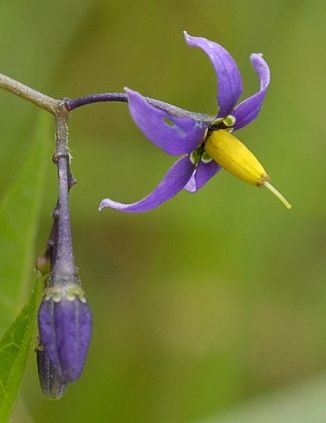Also known as Woody Nightshade, this scrambling plant trails itself through hedgerows and scrub and is also to be found on maritime shingle. It has very pretty little 10-15mm purple flowers in loose, clusters. The corolla has five pointed lobes, the projecting stamens are bright yellow and form a central column. All parts of the plant are poisonous, particularly the red, orange or yellow oval berries which cause vomiting and this plant can cause death in children if they eat too many of the berries particularly. It has arrow or heart-shaped leaves and it flowers from June to September, growing to 1.5m high. This is a native plant and belongs to the family Solanaceae.
I first identified this plant in 1978 in Vicarstown, Co Kildare and I photographed it beside the beach at Blackhall Strand, Co Wexford in 2005.
If you are satisfied you have correctly identified this plant, please submit your sighting to the National Biodiversity Data Centre




